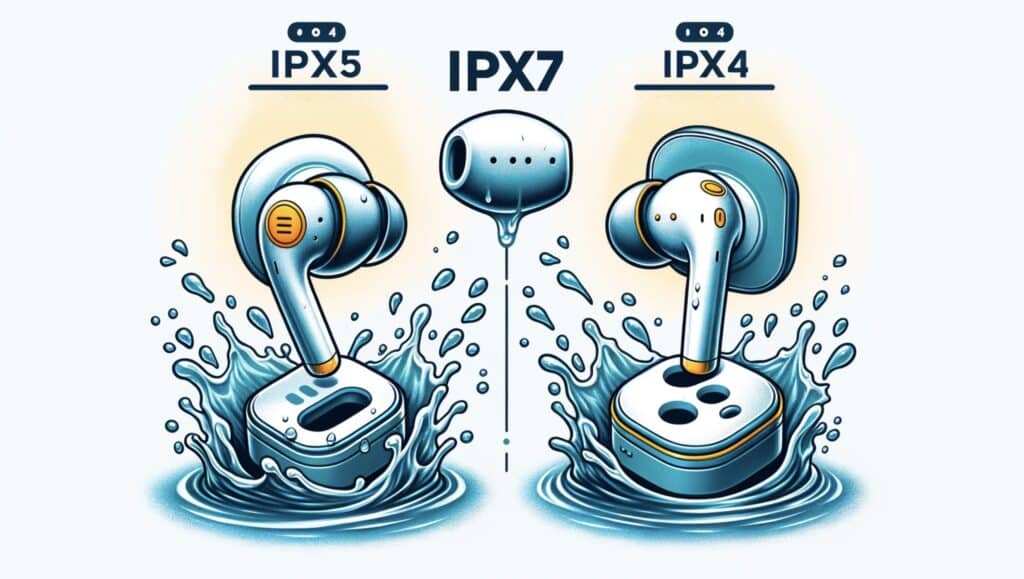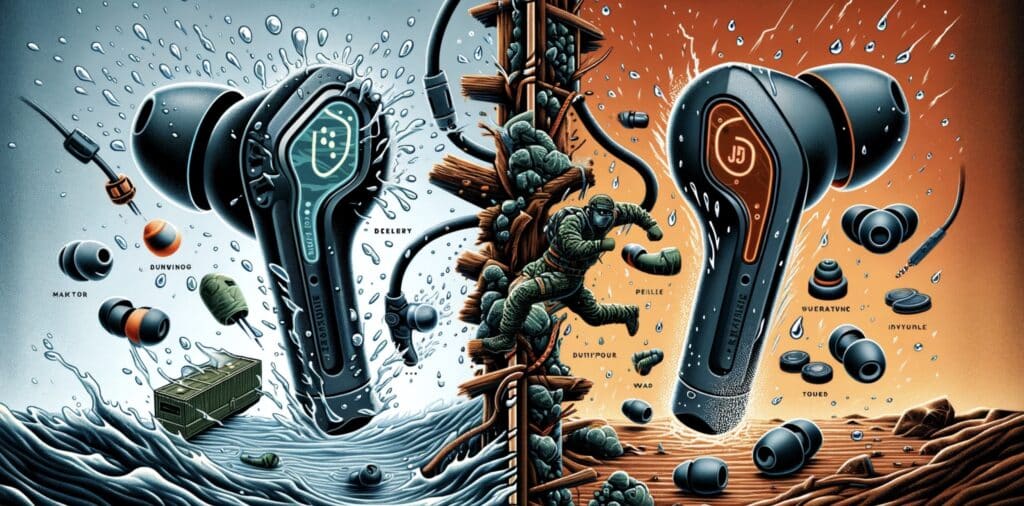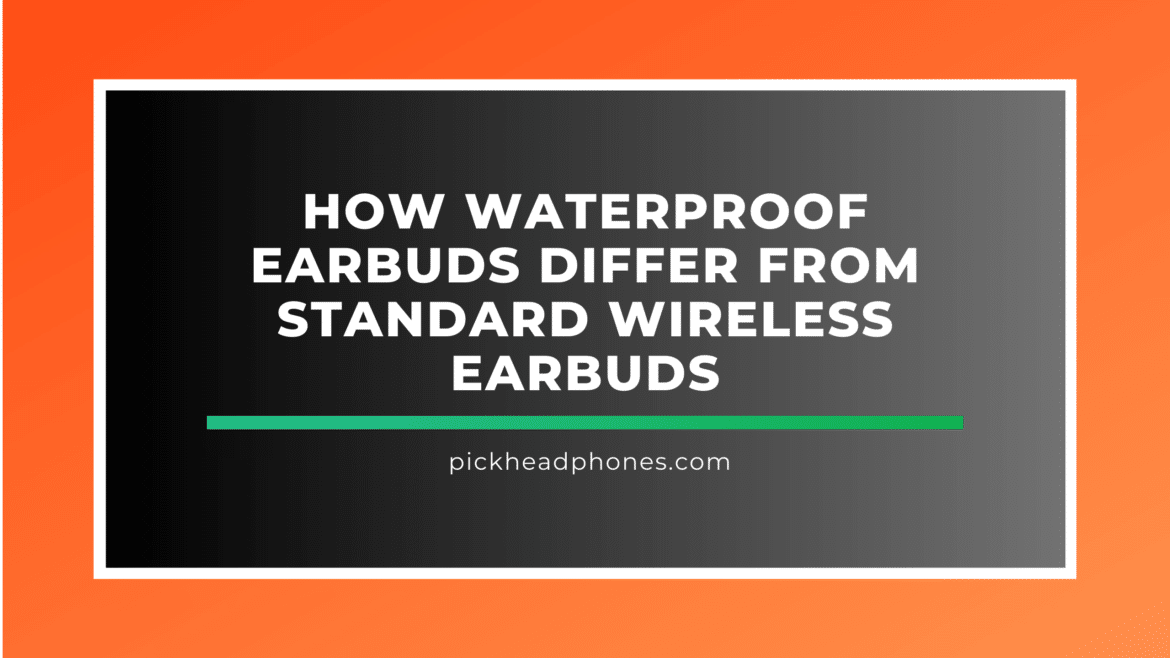- What is the difference in water resistance ratings between waterproof and standard wireless earbuds?
- How are waterproof earbuds designed differently from standard wireless earbuds to ensure a secure fit during water activities?
- In what ways do waterproof earbuds provide better sound quality underwater compared to standard wireless earbuds?
- What makes waterproof earbuds more durable for swimming and water sports than standard wireless earbuds?
- How does the price of waterproof earbuds compare to that of standard wireless earbuds?

In the evolving world of personal audio, the distinction between waterproof earbuds and standard wireless earbuds becomes critical, especially for enthusiasts of swimming and water sports. This article delves into the key differences between these two types of earbuds, offering insights into their design, functionality, and suitability for aquatic environments.
Understanding Water Resistance Ratings: IPX7 and Beyond
The Significance of IP Ratings in Earbuds
The Ingress Protection (IP) rating is a pivotal factor distinguishing waterproof from standard earbuds. Waterproof earbuds often boast an IPX7 rating or higher, signifying their ability to be submerged up to 1 meter in water for 30 minutes without damage. In contrast, standard wireless earbuds usually carry lower ratings like IPX4 or IPX5, indicating resistance to splashes or sweat, but not suitable for submersion.
Table: IP Ratings Explained
| IP Rating | Level of Protection |
|---|---|
| IPX4 | Splash-resistant |
| IPX5 | Water-resistant against water jets |
| IPX7 | Submersible up to 1 meter for 30 mins |
| IPX8 | Submersible beyond 1 meter |
Design and Fit for Active Lifestyles
Tailored for Secure Fit in Water Activities
Waterproof earbuds are meticulously designed with features like wingtips or specialized shapes to ensure a secure fit during rigorous water activities. This design consideration is crucial for swimmers and water sports enthusiasts who require a stable and comfortable fit to avoid losing their earbuds mid-activity.
Sound Quality in Aquatic Environments
Overcoming Underwater Acoustic Challenges
While standard wireless earbuds may offer high-quality audio on land, their performance often deteriorates underwater. Waterproof earbuds, however, are engineered with advanced acoustic designs to deliver clear sound quality, even when submerged, addressing the unique challenges of underwater sound transmission.
Enhanced Durability for Harsh Conditions
Robust Materials for Water and Temperature Extremes
Waterproof earbuds utilize materials capable of withstanding not just water exposure, but also varying temperatures and environmental conditions. This enhanced durability is a key difference from standard wireless earbuds, which may be more vulnerable to such factors.
Connectivity Considerations Underwater
Addressing Bluetooth Limitations
Bluetooth connectivity, the standard for wireless earbuds, faces significant challenges underwater. Waterproof earbuds for swimming may incorporate alternative technologies or have built-in music storage to circumvent the issue of weakened or lost Bluetooth signals underwater.
Price Comparison: Advanced Features Come at a Cost

Investing in Waterproof Technology
The sophisticated technology and materials required for waterproof earbuds generally result in a higher price point compared to standard wireless earbuds. This is an important consideration for consumers weighing the benefits against the cost.
Table: Waterproof vs. Standard Wireless Earbuds
| Feature | Waterproof Earbuds | Standard Wireless Earbuds |
|---|---|---|
| Water Resistance | IPX7 or higher, suitable for submersion | Lower IP rating, not for submersion |
| Design | Secure fit for water activities | Designed for casual, everyday use |
| Sound Quality Underwater | Engineered for clear underwater audio | May lose quality or not function |
| Durability | Robust materials for extreme conditions | Less resistant to harsh conditions |
| Connectivity | Alternative technologies for underwater | Standard Bluetooth connectivity |
| Price | Generally higher due to advanced tech | More affordable, standard features |

Conclusion
For swimming and water sports enthusiasts, choosing the right earbuds is crucial. Waterproof earbuds stand out with their higher water resistance, secure fit, specialized sound quality underwater, enhanced durability, and unique connectivity solutions. While they may come at a higher price, their advanced features make them a worthy investment for those seeking reliable audio performance in aquatic environments.
